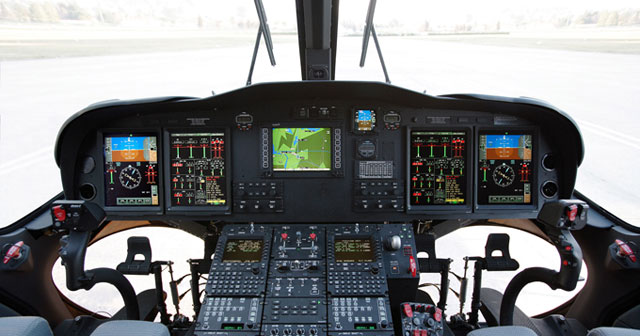
Cockpit view of the AgustaWestland AW139, one of the most popular models among Gulf of Mexico oil rig operators. Photo courtesy AgustaWestland.
Thousands of oil rig workers depend on daily flights that stretch hundreds of miles offshore in the Gulf of Mexico. In this airspace, far beyond radar range, NextGen technology promises to enhance both safety and efficiency, and a Texas company announced this month the first unit that transmits Automatic Dependent Surveillance Broadcast (ADS-B) Out from Chevron’s fleet of AgustaWestland AW139 helicopters.
FreeFlight Systems CEO Tim Taylor said in a press release that the AW139 was chosen for the supplemental type certificate process because it is has a challenging avionics suite, and is a model widely used by offshore operators.
“Working with Chevron we tackled the significant challenges in incorporating ADS-B into AW139’s sophisticated avionics suite. In the end, this installation was quite straightforward,” Taylor said. “Installation in other aircraft types with more traditional avionics systems will be even easier.”
The company is currently working with a Florida firm to test the device in a Cessna 172, and an application for that STC will likely be submitted to the FAA in August, according to a spokeswoman.
An FAA advisory circular spells out installation and testing procedures for granting STCs to ADS-B installations, including the recent installations in the Chevron fleet. ADS-B Out is the NextGen version of Mode C, essentially a Mode C on steroids that broadcasts real-time information about aircraft position, speed, altitude, and heading that allows air traffic controllers (and other pilots with ADS-B receivers) to view that information instantly. The system will be required for operations in Class A, B, and C airspace by 2020.



